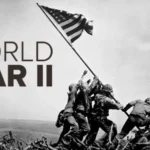
The Boston Tea Party took place on December 16, 1773, it was a protest by the American colonists against the British for the tea taxes imposed on them, during this protest boxes of tea were thrown into the port of Boston by three British merchant ships. The colonists had been told that they could only buy tea from the British East Indian Trading Company. The British had levied taxes on tea through the Tea Act, and the colonists protested by wearing costumes, boarding ships, and sinking the tea load in Boston Harbor. The Boston Tea Party was a key event that led to the start of the American Revolution.
Here are some interesting Boston Tea Party Facts:
The Boston Tea Party took place a few years after the Boston Massacre, which took place on March 5th, 1770.
John Crane was the only “tea partier” man harmed in the Boston Tea Party.
Most American colonists consumed, on average, 2 to 3 cups of tea each day. This equaled approximately two million pounds of tea among 3 million colonists each year.
It was estimated that approximately 90% of the tea being drank by American colonists was smuggled in. Coffee drinking increased as a result of boycotts on British tea.
The colonist group the Sons of Liberty organized the Boston Tea Party to protest the Tea Tax created by the British.
The import tax on tea imposed through the Tea Act was actually lower than what the colonists had already been paying.
The Boston Tea Party Museum is located on the Congress Street Bridge in Boston. It features reenactments, a documentary, and a number of interactive exhibits.
The colonists were not imposing the tax itself but the fact that the Tea Act had been created in British Parliament with no input from the American colonists. The colonists protested with the phrase ‘No taxation without representation’.
About one-third of the participants were skilled artisans like shoemakers, carpenters, and masons.
The three ships in Boston Harbor that were raided in the Boston Tea Party included the Dartmouth Ship, the Eleanor Ship, and the Beaver ship.
Each of the three ships was about 80 feet long with a crew of 8-12 men.
The chosen consignees in Boston were two sons of the Governor, Thomas Hutchinson and his nephew, Richard Clarke.
The Dartmouth Ship was carrying 114 chests of tea; the Eleanor Ship was carrying 114 chests of tea; the Beaver Ship was carrying 114 chests of tea.
The fourth ship the William ran aground in a storm off Cape Cod and never made it to Boston Harbor.
The chests of tea on the three ships included 240 chests of cheap black tea, 15 chests of superior cheap black tea, 10 chests of superior black tea, and 60 chests of green tea.
All 342 chests of tea were dumped into Boston Harbor in the protest, destroying all of it.
Only ships owned by the East India Company could carry tea.
The 342 chests of tea would have made approximately 19 million cups of tea.
In the 1830s, two books—A Retrospect of the Tea-Party and Traits of the Tea Party—popularized the moniker and cemented it in popular culture.
Tea marketed in America was done by shipment receivers (dealers) selected by the East India Trading Company. The dealers in New York, Charleston, and Philadelphia refused shipments prior to the Boston Tea Party, following pressure by the Sons of Liberty. The tea sat on the ships in Boston Harbor for weeks, while the people of Boston held meetings while trying to decide what to do.
The dealers in Boston refused to allow the ships to leave and instead dumped the tea in the harbor.
180 names of men who helped dump the tea are known, but there may have been more involved.
The term ‘Boston Tea Party’ did not appear in print until 1834.
Most of the tea from the East India Trading Company was actually from China, not Britain.
The East India Company reported losses of £9,659 after the Boston Tea Party.









